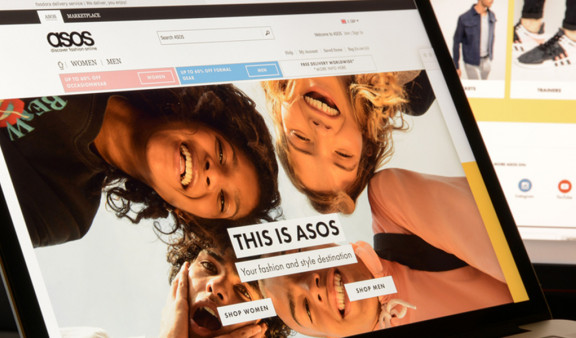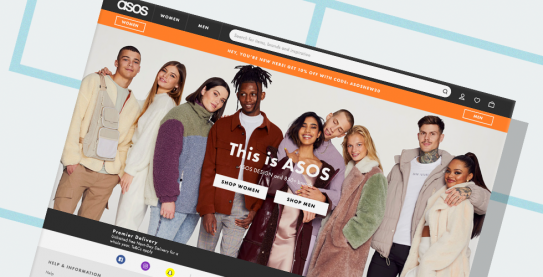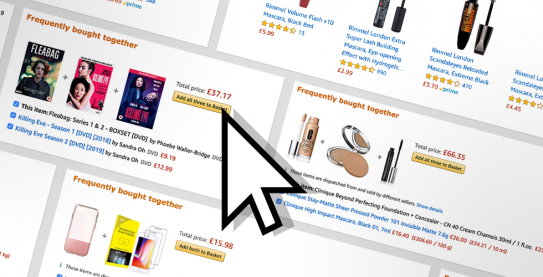
Putting the personal into personalisation
It’s the ultimate paradox of the digital age. Consumers demand relevant, personalised online shopping experiences and will quickly go elsewhere if brands fail to deliver. But shoppers remain concerned about personal data privacy and baulk at the thought of giving away too much personal information.
Personalisation is one of the biggest trends in ecommerce right now and for good reason. It’s not money making the world go around, it’s data.
While many digital retailers have been personalising consumer experiences for years - with more information available on customers and their buying habits than ever before, others are realising it’s not just having the data that’s important, it’s what they do with it that counts.
Personalisation refers to the ability of brands and businesses to connect with consumers on a personal level, curating experiences in a seamless manner across all channels, based on their previous actions, behaviour and data. It’s about engaging thoughtfully with customers and streamlining their entire shopping experience to help them find what they are looking for faster and easier.
Service company Accenture summed it up nicely in its 2018 Personalisation Pulse Check report. It said: “The digitalisation of everything has led to customers having an overwhelming number of choices in everything they do. When presented with too many choices, many customers are likely to make poor decisions, be less satisfied, and abandon a website or brand. When it comes to options, simplicity wins. Companies succeed when they cater to the individual customer and make it easier for them to consume what they want, how and when they want.”
The report said 91 percent of consumers surveyed were more likely to buy from companies who remembered them and provided relevant offers. However, Accenture’s research also found that 79 percent of consumers were frustrated that some companies couldn’t be trusted with personal information and 92 percent said privacy about personal information was important.
If you are a digital retailer, what can you do to meet the needs and expectations of your customers and get this balance right?
Communication is key
The key to personalisation is to think of the whole shopping experience holistically and not just the end transaction. How can you connect with customers before the point-of-sale? How can you add value to their life and maintain this relationship in the future?
In a blog on personalisation, Adobe defines this meaningful relationship as ‘brand utility’, and says ‘the why, how and what you do for your customers are also what will keep them coming back.’
Brands must discover as much information about their customers to improve their shopping experiences, all the while staying as non-intrusive as possible. By then using this data in the correct way, they can build and forge long-lasting relationships.
So how can you get this data? Email addresses, login information and payment data can help get you so far – identifying who the visitor is and allowing you to address them appropriately.
But there are a multitude of customer touch points along the entire consumer journey that can help you find out more about each individual. From browser behaviour and purchase history, to time and location of browsing and cart abandonment, brands can build-up detailed pictures of each customer and streamline their content and recommendations to suit their shopping habits.
A report from SmarterHQ revealed that half of the shoppers it surveyed said the best way to contact them was by email, with 25 percent saying social media. Mobile push notifications and phone calls were low down on the list at three percent and two percent, respectively.
When you have this data, you have the means to better serve your customers and improve their whole shopping experience.

Make your homepage talk to the individual.
So, you have the data at your fingertips - it’s now about making the best use of it. We all know that the homepage is the front door to your online store. But where it used to be enough to change the content on the front page to keep the site fresh, digital retailers should now be presenting customers with unique experiences tailored around their needs and interests.
Take popular clothing brand ASOS. If you go onto its site for the first time, you are presented with the options of shopping in the women’s or men’s section. If you click on the men’s section, next time you go to their online store it remembers you and will present you with a homepage of male product options only.
Many brands streamline this further still. If a customer has shown interest in special offers or particular content in the past, these can be displayed more prominently. The same goes for recently browsed items.
If your customers have not completed a transaction, can you engage with them later? Email re-marketing can encourage customers to return to your site and by having access to the data on what they left in the basket, it allows you to offer discounts on this product or similar items and to shape the homepage accordingly. But it is important to get the content, tone and timing right.
Don’t forget your recommendations.
When you have the homepage talking to the individual, there are still more things you can do to personalise their online shopping experience.
Ocado for instance use clever search and recommendation algorithms which flag products during the checkout process such as missed promotions or ‘have you forgotten’ items.
This may not work for every brand as it can take focus away from what the customer was set on buying or already had in the basket. But a recent McKinsey & Company report attributed 35 percent of Amazon’s sales to recommendations.
They grouped recommendations by: ‘frequently bought together’, ‘customers who bought this also bought’, ‘compare to similar items’ and ‘recommended for you’.
Netflix has also said that 75 percent of its viewing habits on the site stem from the algorithm-led recommendations.
Ensure your recommendations have a call to action and in case the customer doesn’t follow through with the purchase, make sure the recommendations are designed to keep the customer engaged and improve the chances of them buying the products next time.

What does it all mean?
In conclusion - it’s all about the data. And the more we learn about our customers and use this data, the better they will respond to the brand itself.
Listen to your customers and engage with them when they want to be engaged. Consumers don’t want to be ambushed. They also want to know their data is safe so clearly communicate how their data will be stored and used.
Personalisation platforms like Redbox partner Nosto can help brands deliver personalised shopping experiences to customers at every touch point and across every device. You can personalise a huge range of elements of your web store, from navigation bars, video, copy, banners, home pages, check-out. The list is endless and growing all the time.
So, in summary:
- Communication - who is your customer and how are you engaging with them? Don’t be too intrusive, but use a number of touch points to glean as much information about each individual as you can. Research suggests combining your email marketing and social media campaigns for the most effective results.
- Personalise your homepage - with an overwhelming number of choices, streamlining and personalising the entire shopping experience for customers is essential. Tailoring the homepage to each individual will help increase conversion rates and help with repeat business.
- Use recommendations wisely, it can be the key to sustained growth. But what works for one brand doesn’t work for all. Companies such as Amazon see huge sales and returning customers from this personal service. Put in the time to find out what works best for you and your customers.
Ecommerce can sometimes force brands into short-term thinking, but personalising shopping experiences for customers creates more value over time.
Remember your customer, who they are, what they like and their buying habits. Better experiences can lead to better relationships that can last a lifetime.